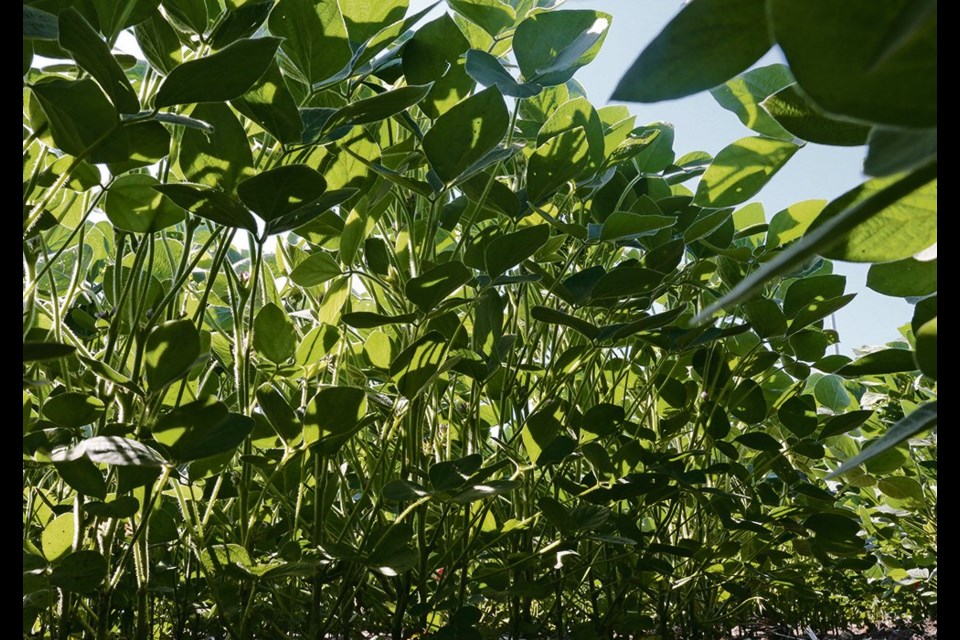WESTERN PRODUCER — Scientists have seen the light on photosynthesis research that is expected to greatly boost yields in food crops around the world.
Crops that are in full sunlight receive more energy than they can use. That extra energy can damage leaves.
Plants use a process called nonphotochemical quenching to dissipate that extra energy by converting it into heat, which is then harmlessly discharged.
The problem is that when a leaf suddenly goes into the shade it could use all that excess energy from the sunlight, but instead it continues to dissipate it as heat for many more minutes.
“If you add this up for (the) crop canopy over the course of the day, it’s quite a lot of lost photosynthesis,” said Steve Long, a professor of crop science and plant biology at the University of Illinois.
Long and his team identified the key enzymes and the genes that code for the relaxation of the nonphotochemical quenching process.
“We identified two enzymes and one other protein involved in this process that we thought needed to be upregulated,” he said.
“The plant has them natively growing. We wanted a lot more.”
The first crop they worked with was tobacco because it is easy to genetically transform and produces lots of seeds, so they were able to go to field trials quickly.
Genes from the Arabidopsis plant were used to produce the desired proteins. The result was a 20 percent increase in yields.
It took a few more years to repeat the process with soybeans because the transformation process is slower and it required more time to bulk up seed for field trials that took place in 2020 and 2021.
But the result was the same in five different field trials involving five independent transformation events, with an average 24.5 percent increase in yield.
“These are small plot trials. We don’t know that we would get such a big increase in a farmer’s field,” said Long.
But achieving the same encouraging result with two very different crops should help resolve one big question in agriculture research circles.
“There has been a long debate with plant breeders about whether improving photosynthesis will ever get you more yield,” said Long.
“This shows we think that it does.”
Their research has garnered significant interest since landing on the August 2022 cover of Science, one of the most cited research journals in the world.
The plan is to do the same transformation with rice, corn and cowpeas. Fortunately, the photosynthesis process is similar in all crops.
“Unlike disease resistance, for example, if it works in one crop it probably works in others,” said Long.
“Many of your readers are interested in canola and we don’t see any reason why it wouldn’t work in that.”
That is an exciting prospect, said Mike Ammeter, chair of the Canadian Canola Growers Association. He said a potential 25 percent yield increase is astonishing.
“Wow,” said Ammeter.
“I don’t think there has been any kind of quantum jump like that in yields in really anything we’ve done.”
He remains skeptical because a lot of exciting research discoveries never make it to the field.
But if it pans out, this could be the answer to the dilemma facing the canola industry, which is how to meet growing demand for a crop that has maxed out acreage.
“From a crop rotation standpoint in a lot of the Prairies we’re just tapped right out,” said Ammeter.
“We just can’t go any tighter.”
That is why the sooner a potential major development like this makes it to the fields, the better.
The research is part of the Realizing Increased Photosynthetic Efficiency project, which is funded in part by the Bill and Melinda Gates Foundation.
Long thinks the foundation may be able to help fast-track commercialization of the project, but that process is likely to take seven to eight years because it is a genetically modified crop.
There are no plans to genetically transform wheat due to lack of consumer acceptance.
However, some of Long’s colleagues at the University of California, Berkeley, are trying to use a gene-editing technique to transform rice and if that works it could also be used on wheat.
Ammeter said he is closer to the end of his farming career than the start but it is research like this that makes him want to hang on.
“I think, man, I’ve got to keep farming with all this fun stuff coming down the pipe in 10 or 20 years,” he said with a laugh.

